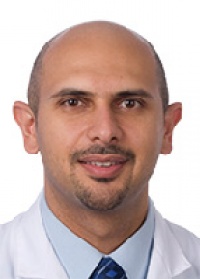
Dr. Thomas George Sharkey MD
Ophthalmologist
703 Rutter Ave Kingston PA, 18704About
Dr. Thomas Sharkey is an ophthalmologist practicing in Kingston, PA. Dr. Sharkey specializes in eye and vision care. As an ophthalmologist, Dr. Sharkey can practice medicine as well as surgery. Opthalmologists can perform surgeries because they have their medical degrees along with at least eight years of additional training. Dr. Sharkey can diagnose and treat diseases, perform eye operations and prescribe eye glasses and contacts. Ophthalmologists can also specialize even further in a specific area of eye care.
Education and Training
Jefferson Med Coll-Thos Jefferson Univ, Philadelphia Pa 1977
Sidney Kimmel Medical College at Thomas Jefferson University 1977
Board Certification
OphthalmologyAmerican Board of OphthalmologyABO
Provider Details
Expert Publications
Data provided by the National Library of MedicineTreatments
- Cataracts
- Diabetes
- Macular Degeneration
- Glaucoma
- Uveitis
- Type 2 Diabetes
- Strabismus
- Farsightedness
- Dry Eye Syndrome
Professional Memberships
- Fellow American Academy of Ophthalmology
Dr. Thomas George Sharkey MD's Practice location
Practice At 703 Rutter Ave
703 Rutter Ave -Kingston, PA 18704Get Direction
Dr. Thomas George Sharkey MD's reviews
Write ReviewPatient Experience with Dr. Sharkey
Recommended Articles
- Diagnosing Cataracts: What You Need To Know
What are cataracts?When the lens located inside the human eye gets cloudy, it is called a cataract. A cataract in Latin means waterfall, thus describing what your vision with cataract is like; seeing through a waterfall. A cataract occurs as a result of the inability of the lens to allow sufficient...
- Is Lasik Eye Surgery Dangerous?
Lasik or laser-assisted in-situ keratomileusis employs a laser beam to correct nearsightedness, farsightedness and astigmatism. These are refractive errors that result from distortions in the curvature of the cornea of the eye. Lasik selectively peels away layers of stromal cells that constitute the...
- In Plain Sight: Vision Changes Linked to Parkinson’s Disease
Parkinson’s disease is a chronic, progressive movement disorder that affects the nervous system. It is characterized by gradual death and breakdown of nerve cells in the brain resulting in the decreased production of a chemical messenger called dopamine. Reduced dopamine levels cause abnormal...
- Vision Problems in Children
A child’s eyesight develops over time, starting with the ability to see objects 8 to 10 inches from their face. The child's eyesight improves gradually between the ages of 12-weeks-old to 16-weeks-old, to which they are able to see objects from farther away. Vision problems in children arise...
- What Is HSV-1?
Herpes Simplex Virus 1 (HSV-1)HSV-1 or herpes simplex virus type 1 is a type of herpes simplex virus that causes cold sores. It is called "oral herpes" because it often causes sores around the mouth or on the lips. Cold sores are also called as fever blisters. However, the sores can also be found...
- Everything You Need to Know About Lasik Eye Surgery
Nearsightedness or myopia, farsightedness or hyperopia and astigmatism or blurred vision are collectively referred as refractive disorders which commonly affect the eyes. They occur as a consequence of disease, injury or progressive aging. The weakening of the eye lens and lengthening or shortening...
Nearby Providers
- Dr. Mary Jennifer Frattali MD503 S State St Clarks Summit PA 18411
- Dr. Michael W Rosiecki MD1360 Wyoming Ave Scranton PA 18509
- Dr. Joseph Patrick Mcgraw MD703 Rutter Ave Kingston PA 18704
- Dr. Mouhammed O Abuattieh MD675 BALTIMORE DR WILKES BARRE PA 18702
- Dr. Erik Forrest Kruger MD703 Rutter Ave Kingston PA 18704
- Dr. Randall R Peairs MD200 Mifflin Ave Scranton PA 18503
Nearest Hospitals
WILKES-BARRE GENERAL HOSPITALl
575 NORTH RIVER STREET WILKES-BARRE PA 18764GEISINGER WYOMING VALLEY MEDICAL CENTERl
1000 EAST MOUNTAIN BOULEVARD WILKES BARRE PA 18711GEISINGER - COMMUNITY MEDICAL CENTERl
1822 MULBERRY STREET SCRANTON PA 18510










